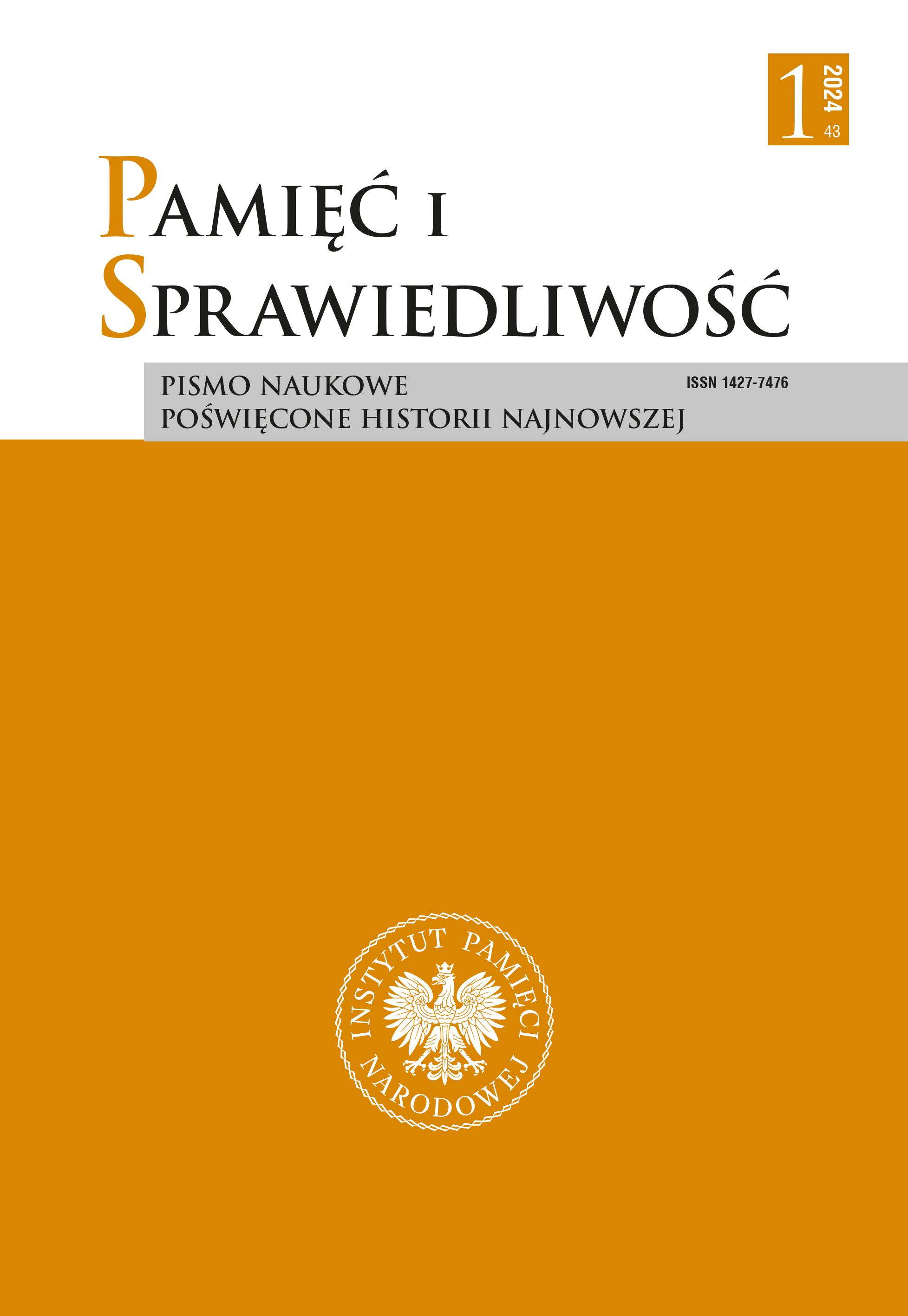Vol. 43 No. 1 (2024)
Tematem przewodnim 43. numeru półrocznika „Pamięć i Sprawiedliwość” jest funkcjonowanie wymiaru sprawiedliwości w Polsce w stanie wojennym. Problematyki tej nie poddano dotąd szerszej analizie, choć prokuratura i sądy – oprócz wojska, milicji i SB – były jednym z filarów wprowadzonego 13 grudnia 1981 r. reżimu. Cechowały go represyjne ustawodawstwo, przejęcie części spraw przez sądownictwo wojskowe oraz czystka personalna, skutkująca odwołaniem około 40 sędziów (dalsi sami złożyli dymisje) i pewnej liczby prokuratorów. Dział „Studia” zawiera artykuły dotyczące pojęcia zbrodni sądowych, kryterium „stopnia społecznego niebezpieczeństwa czynu” w sądzeniu w trybie doraźnym, oceny stanu wojennego po 1989 r., a także represji politycznych z lat 1981–1983 dokonanych na Lubelszczyźnie, Kielecczyźnie, Górnym Śląsku, Opolszczyźnie oraz w ówczesnych województwach krakowskim i kaliskim. Omówiono także przypadki zaocznego skazania na śmierć dwóch byłych ambasadorów PRL. Większość działu „Varia” poświęcona jest młodzieży i szkołom w Polsce po 1945 r. Przedstawiono procesy członków młodzieżowych organizacji konspiracyjnych w okresie 1948–1956, obraz szkoły lat siedemdziesiątych i osiemdziesiątych we wspomnieniach uczniów oraz sposób ukazywania powstań narodowych w podręcznikach z okresu PRL. Przybliżono także opis wydarzeń Października ‘56 w wydawanym we Francji dzienniku „Narodowiec” oraz pomoc wojskową i gospodarczą Stanów Zjednoczonych dla Turcji w latach 1947–1952. W dziale „Materiały i dokumenty” umieszczono edycję protokołu oględzin czaszek pochodzących z mogił katyńskich, przeprowadzonych w 2002 r. w Akademii Medycznej we Wrocławiu, wraz z obszernym komentarzem historycznym. Całość uzupełniają dwie recenzje oraz sprawozdanie z konferencji.
 Język Polski
Język Polski
 English
English
 Deutsch
Deutsch
 Français (France)
Français (France)
 Italiano
Italiano
 Русский
Русский


 PDF (Język Polski)
PDF (Język Polski)

